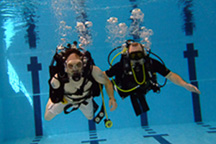Club Diving
Members of Southsea Sub-Aqua Club frequently dive along the South coast of England and have dived much of the rest of the UK and around the globe. The pages linked below provide some useful local information, as well as samples of what our members have done or are doing.
Historic Wreck Diving in Norman's Bay 2011
- Details
- Category: Trip Reports
During the weekend of 10-12 May 2011, 14 members of SSAC dived on the unique Norman's Bay cannon wreck from the club RIB.
The wreck site comprises 42 large cannon, an anchor and other artefacts and is believed to be from the early 1700s. The identity of the ship remains a mystery but is possibly the wreck of HMS Resolution. The Norman's Bay wreck site was discovered in 2005 and is protected under the Protection of Wrecks Act 1973. However, permission to dive under a visitor license can be arranged through the Nautical Archaeology Society - Norman's Bay Wreck.
Over the last year, several SSAC divers have been assisting the NAS with wreck site surveys and the creation of a diver trail which is now fully installed. At a maximum depth of 12m, this trip was the perfect opportunity for other divers of all levels to try out the diver trail and get 'blown away' by the size of the magnificent cannons - some three metres long.
Taking our own club RIB was easy, mooring overnight at Sovereign Marina, Eastbourne and running shuttles from the beach at Norman's Bay throughout the day and camping overnight at a site just across the road from the beach.
Unfortunately, the visibility wasn't conducive to good photos, so here are a few from a visit last year.
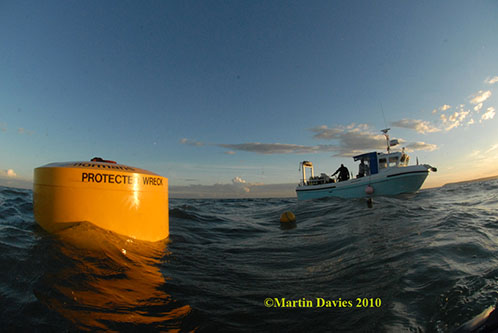
Red Sea Trip 2011
- Details
- Category: Trip Reports
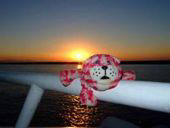
Escorted wreck tour with Mike Ward and Bagpuss - MY Hurricane (Feb 11).
Members of SSAC joined MY Hurricane at Sharm El Sheikh in the days immediately following the recent Egyptian revolution to indulge in a week of fabulous wreck diving. We made the most of this quiet time and were the only boat at all of the dive sites. Mirror calm seas, great wrecks and a pleasant 23C water temperature made a welcome change from the cold chill of the UK winter and diver training in quarries.
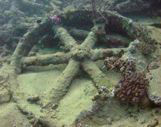
Itinerary
Day 1- Emperor Fraser, Kimon M, Giannis D, Abu Nuhas Reef
Day 2 - Chrisoula K, Carnatic, The Barge (2 dives)
Day 3 - Rosalie Moller (2 dives)
Day 4 - Rosalie Moller (2 dives), The Barge (night dive)
Day 5 – Ulysses, Kingston, Thistlegorm, (2 dives)
Day 6 - Thistlegorm, Shark & Yeolanda
Download David Purvis's comprehensive trip report with an account of the trip, many photos, as well as historical, structural and other information on the wrecks.
HM Submarine A1 Report 2012
- Details
- Category: HM Submarine A1
Extract from Martin Davies' report:
Wreck Condition
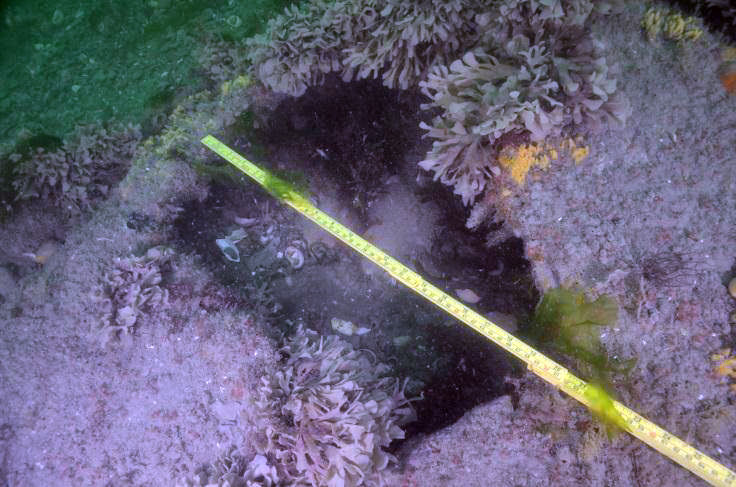
The wreck of the A1 Submarine remains a stable and robust site for visiting divers to see, while she is showing signs of deterioration in many areas, the cracks in the conning tower being the most visible.
Numerous holes can be seen in the rear casing one of the largest is 49cm across. The submarine is still very much intact. The build-up of sediment inside the wreck remains a concern in the forward torpedo loading hatch area along with a large amount of seaweed. When I brief divers they are always advised not to enter the wreck. The sediment and mobile silt that is carried in the water column and gives the area its poor visibility seems to be deposited in this area.
Conclusion
The A1 is as popular as ever with still much interest in the wreck and I can only see it growing greater next year. The story of HMSm A1 and the wreck today featured in the 2011 BBC television programme, Britain’s Hidden Heritage and the ‘SCUBA’ magazine feature in April 2012 has generated interest this year in diving the site, however, the poor weather that has dominated the 2012 season has impacted on the amount of diving and survey activity that was planned.
BBC: Britain's Hidden Heritage, Series 1, Episode 2
"...guest reporter Charley Boorman uncovers the sunken remains of Britain's very first submarine."
Download the SCUBA Magazine article that is archived on Martin Davies' website.
LCT 427 Memorial Ceremony
- Details
- Category: Kedge Hook HM LCT 427
17 November 2011
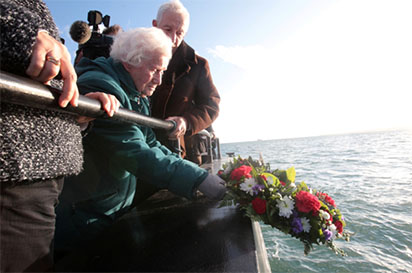 In a touching ceremony, thirteen Royal Naval heroes who perished on their return home from D-Day have been remembered with a the laying of wreaths at sea over the site of their final resting place just four miles from their home port of Portsmouth.
In a touching ceremony, thirteen Royal Naval heroes who perished on their return home from D-Day have been remembered with a the laying of wreaths at sea over the site of their final resting place just four miles from their home port of Portsmouth.
Families had waited more than 67 years to discover what had happened to their loved ones and to be given the opportunity to pay their final respects. A young RN sailor piped the 'Still' and a silence was observed for the officers and men of Landing Craft Tank LCT 427. Wreaths were laid on the water over the shipwreck 30m (100ft) below.
In the early hours of 7 June 1944, His Majesty's Landing Craft Tank LCT 427 was returning home with a flotilla of other craft when, in the darkness, she was involved in a collision with a large battleship and sank with the loss of all hands. With so much going on at the time the tragic accident went unreported and LCT 427 was recorded as ‘missing’ along with her crew. The families of the crew were not aware of what had happened and assumed their loved ones had been lost in Normandy when they failed to return home.
Only one of the crew, Able Seaman Kenneth Sumner, aged 22, was recovered from the water but he died two days later. His fiancée, Margaret Emmett Hunter from Wickham, Hampshire, was one of those attending the service along with the families of another five of the crew.
Margaret, now 87, was only 19 when she became engaged to the Kenneth Sumner, a handsome young sailor from Wilmslow. Clutching photographs and newspaper clippings she said, “Kenneth loved dancing and was a fun, kind-hearted man. We were engaged in the November of 1943 and I last saw Kenneth in February of 1944. In June 1944, I heard in a letter from his father that he had been killed. I was devastated. I never really got a chance to say goodbye and did not know what had happened until recently. ”Margaret was relieved to finally know what had happened and for the opportunity to visit the place where LCT 427 had come to rest. “I never forgot about Kenneth. It's been good to come here today and finally say goodbye. It leaves me so sad to think of all those lives lost.”
D-Day veteran Paul Butler, 85, from Chipping Norton was a young midshipman in the Royal Navy onboard LCT 454, one of the other craft returning with LCT 427 from the D-Day beaches that night. He believes he signalled the ill-fated landing craft to warn of oncoming danger but cannot be certain. He said, “I saw the silhouette of a large ship coming towards us. I took evasive action to avoid being hit. It has long played on my mind whether there was something more that I could have done that night. I am very honoured to be able to pay my last respects to the crew of LCT427 that awful night.” Paul was honoured to be able to give the reading as a mark of his respect for his lost comrades.
Gladys Ingle, 85, travelled with her family from Sheffield to the Solent to pay her respects to elder brother Hallam Carr. She described the moment when she tossed the wreath onto the water. “It's so sad to think that they were so close to home. At last I have visited the place where Hallam was lost and said goodbye.”
Family members attending were related to the following crew members:
Hallam CARR, Eric FIELDS, David SPILLANE, Kenneth SUMNER, Joseph 'Bill' WHITFIELD, Alfred GIRARD, Frank FREEMAN
Memorial service planned for crew of LCT 427
- Details
- Category: Kedge Hook HM LCT 427
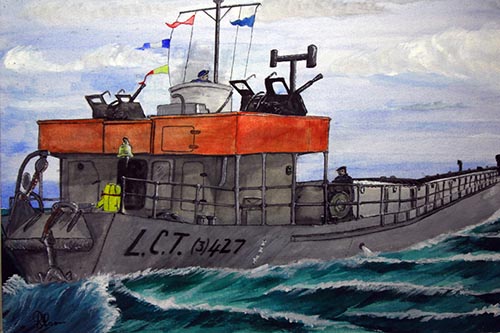 Following the successful countrywide appeal for relatives of the crew of LCT 427 to contact SSAC, a memorial service has been arranged for 17th November 2011. So far relatives of nine of the 13 crew have been in touch and many are planning to attend the service at Portsmouth Dockyard. Divers from SSAC and veterans from the LST and Landing Craft Association will also take part in the service.
Following the successful countrywide appeal for relatives of the crew of LCT 427 to contact SSAC, a memorial service has been arranged for 17th November 2011. So far relatives of nine of the 13 crew have been in touch and many are planning to attend the service at Portsmouth Dockyard. Divers from SSAC and veterans from the LST and Landing Craft Association will also take part in the service.
The memorial service will include a wreath laying at sea at the exact position of the wreck of LCT 427 followed by a short service at St Ann's Church at the Portsmouth Naval Base. All relatives and comrades of the crew are most welcome to take part. Please contact This email address is being protected from spambots. You need JavaScript enabled to view it. asap if you wish to attend.
On her return to Gold beach in the early hours of 7 June 1944, LCT 427 sank with the loss of all hands four miles from her home port of Portsmouth following a collision with another vessel. More than 65 years later, divers from SSAC located and surveyed the wreck of 427 which lies at a depth of 30m in the busy shipping lane approaching Portsmouth and Southampton harbours. Our work to survey the wreck site has been made possible by means of a grant from the British Sub-Aqua Jubilee Trust and the kind permission of the Queen's Harbour Master at Portsmouth.
The memorial service has been made possible by the kind support of the Royal Navy and Chaplain Revd Keith Robus RN.
The Officers & Men of HM LCT 427
|
ALEXANDER, Frederick B |
GUTHRIE, George T Ty/Sub Lieutenant, RNVR, Commanding Officer |
| CARR, Hallam Able Seaman, P/JX 365096 Aged 19 |
JOHNSON, Albert E Able Seaman, P/JX 323203 Aged 22 |
| DAWE, William A Stoker 1c, D/KX 525694 Aged 40 |
SPILLANE, David Able Seaman, D/JX 368929 Aged 22 |
| FIELDS, Eric Able Seaman, D/JX 422546 Aged 19 |
SUMNER, Kenneth W Wireman, D/MX 99992 Aged 22 |
| FREEMAN, Frank Ty/Sub Lieutenant, RNVR Aged 20 |
WELSH, Leonard G Motor Mechanic, P/JX 426606 Aged 24 (19?) |
| GIRARD, Alfred W Able Seaman, P/JX 223849 Aged 22 |
WHITFIELD, Joseph W Act/Chief Motor Mechanic 4c, P/MX 98645 Aged 24 |
| GRAHAM, James Stoker 1c, P/KX 159134 Aged 37 |
SSAC diving on LCT 427 in the news
- Details
- Category: Kedge Hook HM LCT 427
20 September 2011
The story of the loss of LCT 427 and the work carried out by SSAC divers, under the leadership of Alison Mayor, to investigate the wreck site in the shipping lane (Project Kedge Hook) has been picked up in the media.
This article is on the BBC news website whilst this article appeared in The News in Portsmouth. Alison was also interviewed live on BBC Radio Solent at 07:55 on Tuesday 20 September.
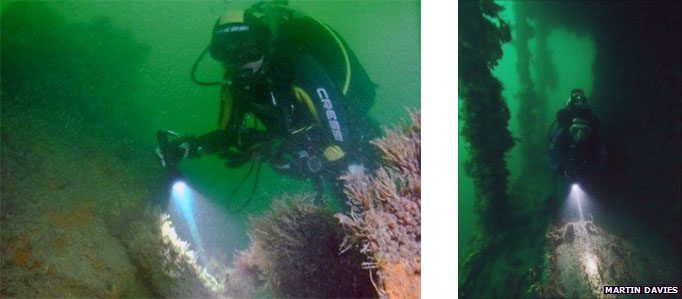
Project Kedge Hook: HM LCT 427 Survey 2011
- Details
- Category: Kedge Hook HM LCT 427
2-5 July 2011
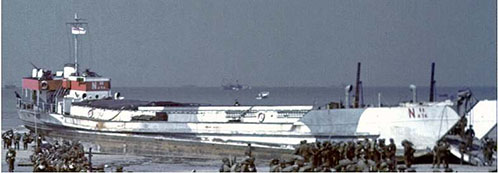 Southsea Sub-Aqua Club divers begin their latest and most challenging wreck investigation yet - the wreck of a British WW2 Tank Landing Craft in the Eastern approaches to Portsmouth Harbour.
Southsea Sub-Aqua Club divers begin their latest and most challenging wreck investigation yet - the wreck of a British WW2 Tank Landing Craft in the Eastern approaches to Portsmouth Harbour.
The wreck is believed to be that of HMLCT 427 which sank on her return to Portsmouth after delivering her cargo of tanks on D Day. Just 4 miles from home, at 3am on the morning of 7th June 1944, HMLCT 427 was in collision with the 34,000 tonnes battleship HMS Rodney. She was sliced in half by the collision and sank immediately with the loss of all hands. For over 2 months the collision went unreported and the LCT was reported as missing.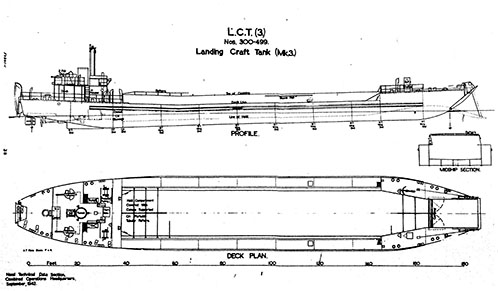
The wreck now lies in two pieces at a max depth of 32m. Diving conditions are extremely challenging, primarily because the wreck lies in the main shipping lane to the Solent ports but also poor visibility and strong currents. Special permission has kindly been given by the Queens Harbour Master (QHM) Portsmouth and Vessel Traffic Services (VTS) Southampton to undertake a total of 8 days diving during July and August on the bow and stern sections. A Local Notice to Mariners has been issued to warn vessels of the diving activities LNTM 49/11. The MOD (Navy Command) has also given permission to dive the wreck sites.
Members of SSAC are extremely grateful for the assistance and guidance given by the QHM and to the British Sub-Aqua Jubilee Trust who have provided funding for the survey. A report of our diving survey and the results of historical research will be completed in the New Year.
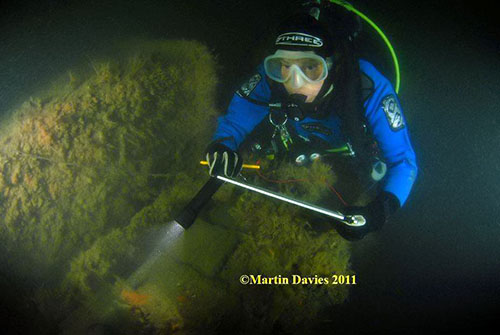 All our diving/survey activities are being conducted in a considerate, respectful and non-intrusive manner in the knowledge that this is a military maritime grave. SSAC is also trying to arrange a memorial service for those lost in the tragedy, whose final resting place has been unknown until now. It is hoped that this can be arranged to coincide with the events marking the disbandment of the LST & Landing Craft Association (RN) in September 2011.
All our diving/survey activities are being conducted in a considerate, respectful and non-intrusive manner in the knowledge that this is a military maritime grave. SSAC is also trying to arrange a memorial service for those lost in the tragedy, whose final resting place has been unknown until now. It is hoped that this can be arranged to coincide with the events marking the disbandment of the LST & Landing Craft Association (RN) in September 2011.
HM Submarine A1 Report 2011
- Details
- Category: HM Submarine A1
Extract from Martin Davies' report:
Wreck Condition
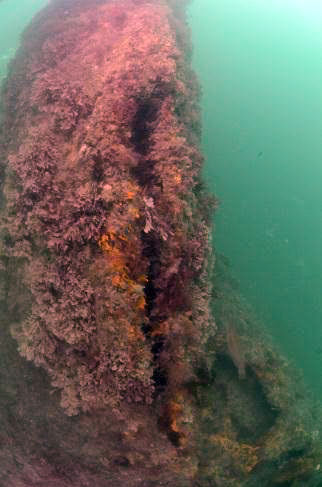
The wreck of the A1 Submarine remains a stable and robust site for visiting divers to see, while she is showing signs of deterioration in many areas, the cracks in the conning tower being the most visible; the submarine is still very much intact. The build up of sediment inside the wreck remains a concern in the forward torpedo loading hatch area along with a large amount of seaweed. The sediment and mobile silt that is carried in the water column and gives the area its poor visibility seems to be deposited in this area.
Marine Life
The wreck remains a haven for marine life with lots of marine life using the wreck as a home, the most common species being Tom Pot Blenny. Other species that are regularly seen are edible crab, lobster, velvet swimming crab, conger eel, a large shoal or bib or poor cod. Sponges and sea squirts are the next most dominant animal to be seen.
Threats
The wreck this year has not seen any major threats; no illegal commercial fishing activities have been seen while visits have been conducted and no damage to the wreck has taken place.
The Scour at the bow remains similar to previous years while the seabed around the wreck contains a lot of mobile silt and is very easily disturbed by careless diver fining activity.
Cider and Shipwrecks: Normandy July 2010
- Details
- Category: Trip Reports
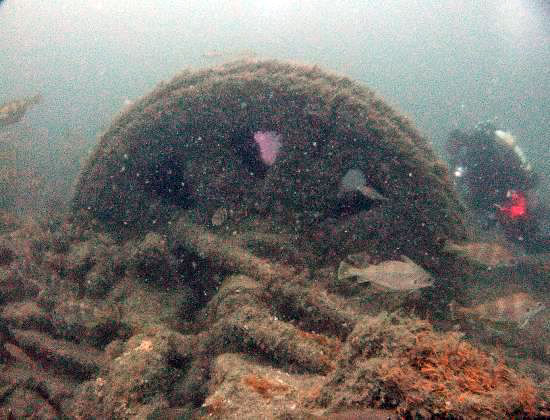
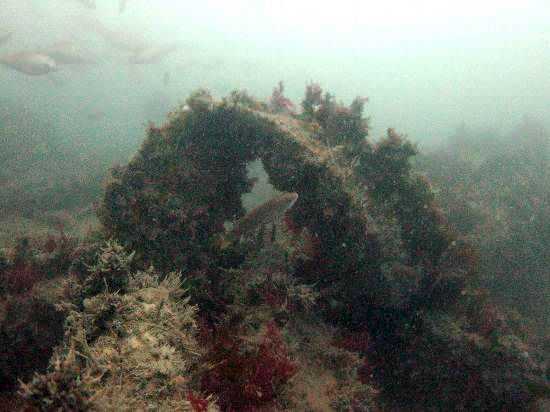
It was a perfect day. The summer sun shone brightly and the tranquil delights of the Normandy coast beckoned.
Casting off the shackles of day-to-day living, ten divers from Southsea SAC and the Buccaneers assembled in the pretty Norman town of Port-en-Bessin to enjoy seven long hot days filled with great diving, crisp local Cider and amazing seafood - in short "La vie normande". A fishing port for hundreds of years, Port-en-Bessin still ranks as the seventh largest fishing port in mainland France.
Irish Adventure: Rathlin Island May 2010
- Details
- Category: Trip Reports
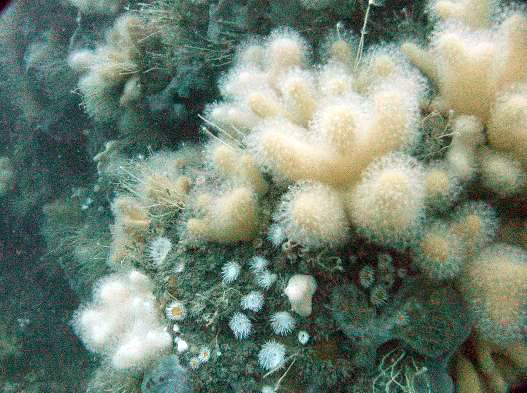
Best known for its abundance of adrenaline-pumping top-class deep wreck sites and clear waters, the North Antrim coast of Northern Ireland is also a great place to experience spectacular scenic dives and shallow scenic wrecks. As a result, a group from Buccaneer Divers crossed the Irish Sea to complete three days' diving over the May bank holiday and experience "the craic" first hand.
The only dive centre on the North Antrim Coast is Aquaholics based in Port Stewart, which has a subsidiary operation in Ballycastle where we planned to base ourselves as the harbour is directly opposite Rathlin Island making for easy transfers to the site. They have two RIBS, a large 11m craft with a side ladder, which takes 10-12 in comfort and a 6m craft which takes 6 divers.
Travelling in our own cars via the Norfolk Line overnight ferry service from Birkenhead to Belfast we disembarked in Belfast at 7am on the Friday giving us plenty of time to drive to the Ballycastle dive centre, settle in and explore the area. Diving operations began on Saturday which was a real "four seasons" day featuring mist, rain and hail before ending in brilliant sunshine.
Our first dive was on the SS Lough Garry. This former Caledonian McBrayne ferry was pressed into war service as a troopship and sank with the loss of 29 crew during a gale in January 1942 whilst en route from Glasgow to Oban where she had been due to transport a garrison to the Faeroe Islands to prevent them being used as a U boat base.
Now lying in 30m, she's a lovely dive with lots to see and explore including an impressive boiler and the mount for her stern deck gun.
Subcategories
Local Diving Information
![]()
Over the years our club has used a variety of local facilities to help us go diving. There are also a variety of different dive sites available to meet the needs of divers with a wide range of experience and interests.
- Boat Charters
- Launch sites
- Dive Shops (Gas & Gear)
- Inland diving
- Shore Dives
- Boat Dives
- Charts, tides & weather
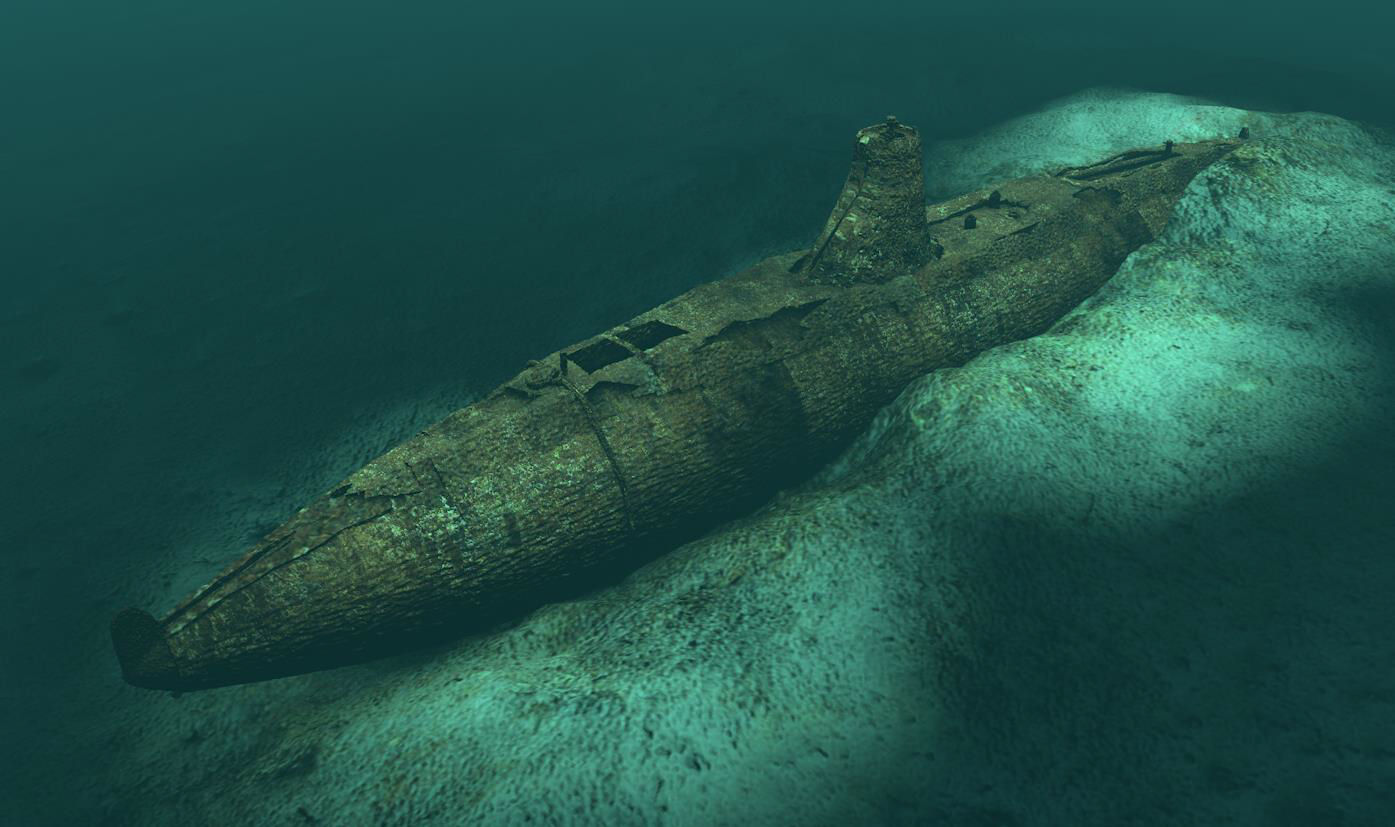
We are lucky to be located in the middle of the south coast. The local area offers the possibility of a range of diving from shallow easy dives for a trainee diver, to deeper, more challenging dives for the experienced mixed gas diver. The sites are often based around a wreck, with a few gullies or reefs too. The wrecks include a wide range of crafts. They are not limited to just shipwrecks from both wars, even if these are the more common. We have a range of historic sites including the Mulberry Harbours, Tanks & Bulldozers, aircraft, and submarines. There are a few protected sites too, such as the HMS A1, HMS Invincible & Thorness Bay protected wrecks which are diveable with the permission of the respective Licensees.
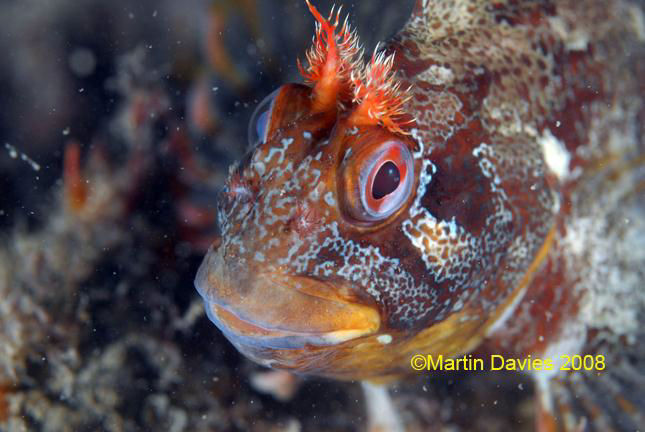
Sealife varies from season to season. It includes things such as sponges, pink fan coral, Pollack, blennies, pipefish, common starfish, painted top shells, whelks, mussels, oysters, scallops, cuttlefish, dogfish, wrasse, a variety of crabs, lobsters, eels, rays and many flatfish. If you are lucky, then you may be accompanied by a pod of dolphins on your way to the dive site!
Picking the right conditions can be tricky. The Solent Ooze covers some areas and can contribute to the debris floating in the water column. It isn’t helpful when the dredgers are busy improving the local harbours which would otherwise silt up. There are a couple of dumping grounds, the most popular being just south of the Nab Tower to the east of the shipping channel on the east side of the Isle of Wight.
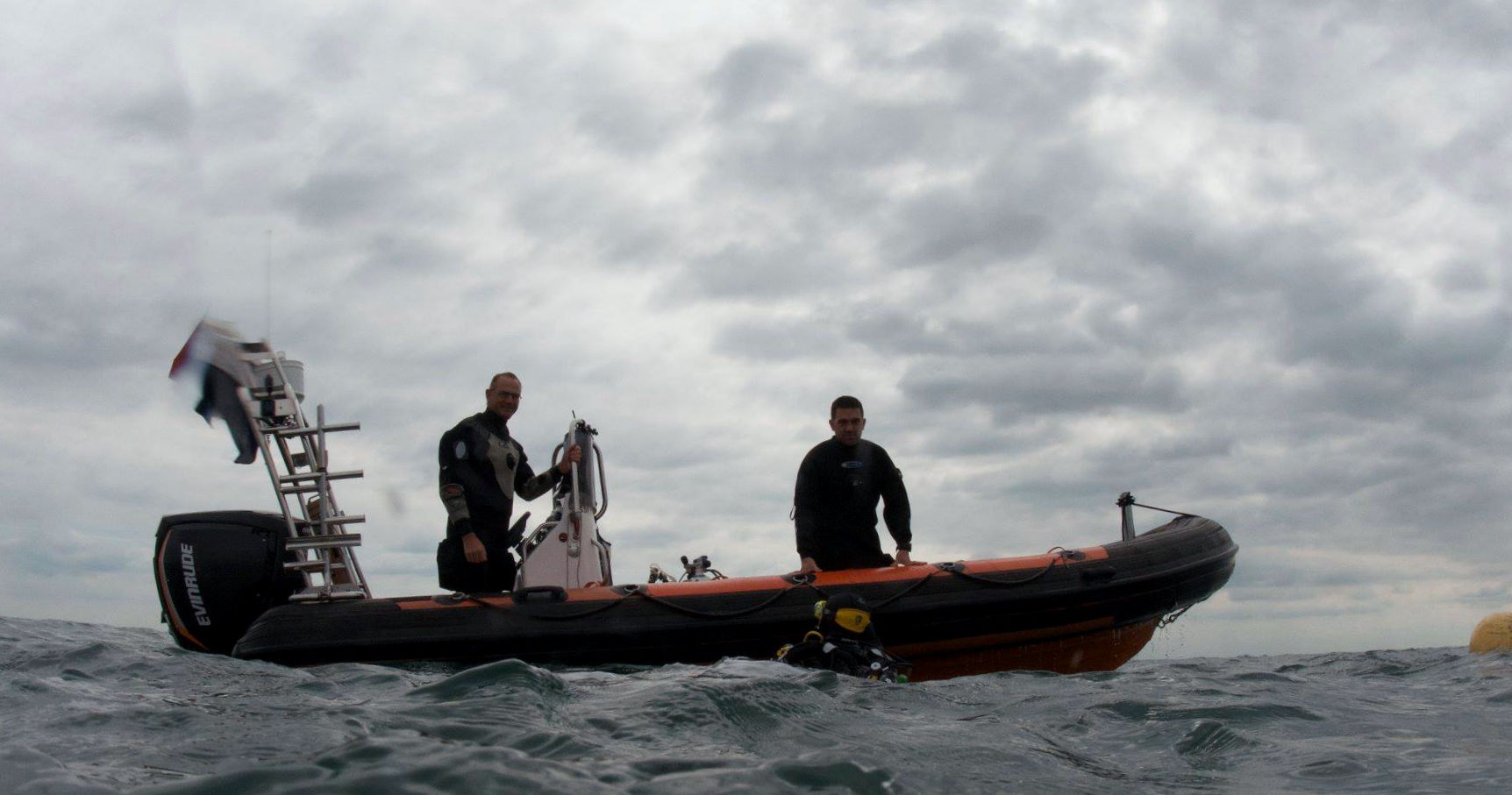
The local tidal forces are unique. The Isle of Wight has an effect and when the conditions are right, you can get a double high tide. This can make planning slack water “interesting” at times. Some areas are better dived at low water slack, whilst a few are better dived at high water slack. There are a handful of drift dives, but most diving is best completed on slack water.
Guides such as “Dive Isle of Wight and Hampshire” or “Dive Sussex” are useful for identifying many of the local dive sites. They haven’t been updated for a few years and there are several errors in many of the listed sites as a result of time and more up to date information becoming available. For more accurate GPS marks, it can be better to use the website https://www.wrecksite.eu/ .
![]() Return to the Local Diving info page...
Return to the Local Diving info page...
Trip Reports

Members of Southsea Sub-Aqua Club often plan a weekend, long weekend, week or longer trips together to a variety of places either in the UK or abroad. Sometimes a member of the group will put together a diary or report and illustrate it with some images of the holiday. Often too they'll include a little humour as well. Below are some diaries and reports of what they got up to on a few of the trips. Many are holidays and a few are about the expeditions or projects which members have been involved with too.
Diving Projects
Britain has relied upon the seas surrounding her for many millennia. Whether it has been for fishing, the import and export of goods, travelling and exploration or for protecting her shores from potential invaders. Occasionally a craft has failed to complete its journey and has sunk below the waves, leaving a wreck. More often this has been caused by a storm at sea, but can also have been caused by an accident (i.e. collision), navigational error or through warfare.
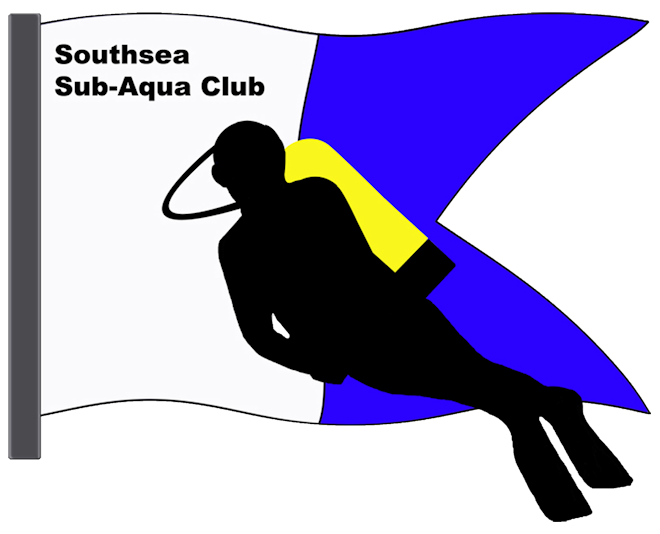
Southsea Sub-Aqua Club has a long history of wreck site investigation, the most well-known being "Project Solent Ships" which directly led to the discovery of the Mary Rose, but we didn't stop there. Over the years the Club has developed an association with a number of local wreck sites and some off the Normandy coast.
The projects involve a number of different types and ages of wrecks. They include ships, landing craft, aeroplanes, Mulberry harbours, armoured bulldozers and tanks from the two World Wars, as well as older wrecks, much older.
Today there are various courses available to help divers to record the sites and various members have completed such courses. They may have been completed within the club or through other organisations, such as the Nautical Archeology Society (NAS) or a University.

Some techniques have changed over the years as new technologies have become available. Where once an accurate sketch may have been sufficient, today you'll often find people still using tape measures and underwater slates, but also you'll find some using underwater cameras to help produce stills, video and 3D images. Often local and national news services have become interested in the stories of the projects too.
The articles below provide links to the various projects. They include photos and drawings of the sites, a record of the kind of life observed by the teams as well as some history to help bring them back to life.



